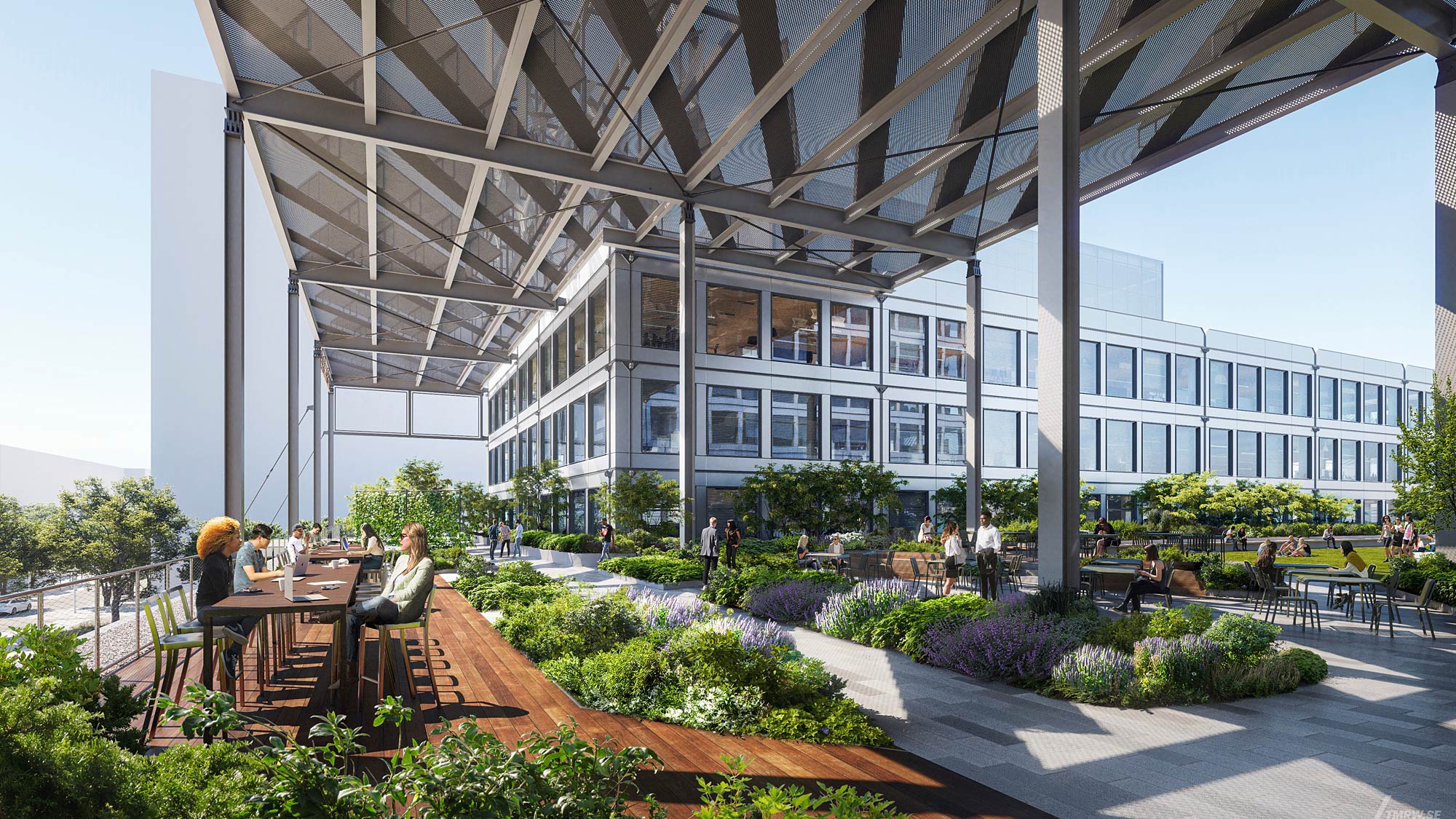Eco-friendly innovations in home design are the future of living spaces. As the world becomes more environmentally conscious, the demand for sustainable and eco-friendly living spaces is on the rise.
Homeowners and builders alike are recognizing the importance of reducing their carbon footprint and creating homes that are not only aesthetically pleasing but also environmentally responsible. From solar panels and energy-efficient appliances to green roofs and rainwater collection systems, new technologies are making it easier than ever to design and maintain eco-friendly homes.
In this article, we will explore some of the latest innovations in eco-friendly home design and how they are shaping the future of living spaces.

Credit: www.gensler.com
The Benefits Of Eco-Friendly Living Spaces
The Impact Of Traditional Housing On The Environment
The construction and maintenance of traditional homes can have a significant impact on the environment. Here are some key points about the negative effects of these homes:
- They consume a vast amount of energy
- They generate a large amount of waste
- They can cause pollution
- They contribute to deforestation and the depletion of natural resources
How Eco-Friendly Living Spaces Can Mitigate Environmental Impact
Eco-friendly living spaces can have a significant impact on reducing the environmental footprint of homes. Here are some key points about how eco-friendly living spaces can make a difference:
- They can reduce energy consumption through the use of efficient appliances, lighting, and heating systems
- They can reduce water usage through the use of low-flow fixtures and rainwater harvesting systems
- They can minimize waste production by implementing recycling programs and using sustainable materials in their construction
- They can reduce the impact of transportation by being located close to public transportation or being designed for walking and biking
The Health Benefits Of Eco-Friendly Living Spaces For Occupants
Eco-friendly living spaces not only benefit the environment, but they can also improve the health and well-being of their occupants. Here are some key points about the health benefits of eco-friendly living spaces:
- They can improve indoor air quality with the use of ventilation systems and non-toxic materials
- They can reduce exposure to harmful chemicals and pollutants that can cause respiratory problems, allergies, and other health issues
- They can promote relaxation and reduce stress with natural lighting, green spaces, and access to nature
- They can facilitate physical activity and improve overall health with outdoor spaces for exercise and transportation options that encourage walking and biking
As we become more aware of the impact traditional homes have on the environment and our health, eco-friendly living spaces are becoming increasingly popular. By implementing sustainable practices and materials, these homes can reduce their environmental footprint while promoting the health and well-being of their occupants.
Innovations In Eco-Friendly Home Design
The Future Of Home Design: Innovations In Eco-Friendly Living Spaces
With the increasing concern for the environment, eco-friendly home design has become a hot topic among designers and homeowners alike. The objective is to reduce the household’s carbon footprint while also maximizing energy efficiency. This article explores the innovations in eco-friendly home design that make sustainable living accessible to everyone.
Trends In Eco-Friendly Home Design
Eco-friendly home design involves using sustainable building materials, maximizing natural light, and installing energy-efficient systems. Here are the top trends in eco-friendly home design:
- Passive solar homes: These designs take advantage of the sun’s natural heat during winter and reduce solar gain in the summer, minimizing the need for heating and cooling systems.
- Building with sustainable materials: Using materials such as bamboo, cork, and reclaimed wood are not only environmentally friendly, but they also lend an aesthetic appeal to a home.
- Smart homes: Home automation systems allow homeowners to control energy consumption and optimize heating, lighting and cooling automatically.
- Recycled and reclaimed materials: Repurposing materials helps to minimize waste and reduce the amount of energy required to produce new materials.
- Green roofs: Using vegetation on roofs offers a host of benefits such as absorbing rainwater and providing insulation, making the home more energy-efficient.
The Latest Technological Innovations In Eco-Friendly Home Design
Advancements in technology have brought about new possibilities in eco-friendly home design. Below are the latest technological innovations:
- Solar panels: Solar panels have come a long way in recent years, improving in efficiency, affordability, and aesthetics.
- Smart windows: Smart windows are designed to adjust to the environment’s temperature, reducing energy consumption by controlling heat loss and gain.
- Water saving devices: Many devices help homeowners conserve water, from low-flow faucets to smart irrigation systems that use weather data to alter watering schedules.
- Heat pumps: Heat pumps work by moving heat from one location to another and are becoming increasingly popular in eco-friendly homes.
How Innovations In Eco-Friendly Home Design Are Making Sustainable Living Accessible To Everyone
Innovation in eco-friendly home design has made sustainable living increasingly accessible to everyone. Here are a few ways:
- Cost-effective solutions: There are many eco-friendly and affordable solutions available, such as energy-efficient appliances, which can significantly reduce utility bills and be a long-term saving.
- Government support: Many countries offer incentives for those who invest in sustainable home design and appliances.
- Increasing awareness: As more people become aware of the importance of sustainability, the demand for eco-friendly homes is growing. This will lead to more affordable options and more accessible products.
- Education and research: There are many free online resources and educational opportunities that could help homeowners learn practical tips for green living and building. As people continue to learn how to implement sustainable solutions into their home design, these innovations will become more accessible to everyone.
Eco-friendly home design is not just an environmental concern, but it is also an excellent investment in the future, allowing for a more comfortable, sustainable living experience. With the innovations outlined more and more homeowners can achieve an eco-friendly and cost-effective home without sacrificing style or comfort.
Challenges And Opportunities
The Future Of Home Design: Innovations In Eco-Friendly Living Spaces
The world is embracing sustainable living practices, and it’s no surprise that eco-friendly home design is on the rise. People want to live in harmony with nature, and eco-friendly homes offer just that. They not only reduce carbon footprints but also provide healthy living spaces.
However, eco-friendly home design also comes with its challenges and opportunities.
The Challenges Faced By Eco-Friendly Home Designers:
Designing an eco-friendly home is not an easy feat. There are many hurdles that eco-friendly home designers face, such as:
- High initial costs: Eco-friendly building materials and technologies are more expensive than traditional ones, which can be a problem for budget-conscious homeowners.
- Lack of awareness: Many people are unaware of eco-friendly home design and the benefits it offers. This poses a challenge to designers in terms of marketing and creating awareness.
- Limited availability of eco-friendly materials: Eco-friendly materials are not widely available, and this can limit the design options available to designers.
- Building regulations: Building regulations can be a challenge, as they are often based on traditional building materials and practices and may not have provisions for eco-friendly homes.
Opportunities For Eco-Friendly Home Design In The Future:
Despite the challenges, there are many opportunities for eco-friendly home design in the future, such as:
- Government incentives: Governments around the world are offering incentives to encourage people to adopt eco-friendly building practices. This can help reduce the initial costs of eco-friendly homes, making them more accessible.
- Growing demand: As more people become aware of the benefits of eco-friendly homes, the demand for them is expected to grow. This presents an opportunity for eco-friendly home designers to expand their businesses and offer more diverse designs.
- New materials and technologies: There is a constant stream of new eco-friendly building materials and technologies being developed. This presents an opportunity for designers to experiment with new materials and create innovative designs.
- Health benefits: Eco-friendly homes offer many health benefits, such as improved air quality, natural lighting, and reduced exposure to harmful chemicals and toxins. This presents an opportunity for designers to highlight these benefits and attract health-conscious homeowners.
The Role Of Eco-Friendly Home Design In Building Sustainable Communities:
Eco-friendly home design plays a crucial role in building sustainable communities. Here’s how:
- Reduced carbon footprint: Eco-friendly homes are designed to have a low carbon footprint by reducing energy consumption and greenhouse gas emissions. This helps to reduce the overall carbon footprint of a community, contributing to a sustainable environment.
- Natural resource conservation: Eco-friendly homes are designed to conserve natural resources such as water and electricity. This contributes to sustainable resource management and environmental conservation.
- Improved health: Eco-friendly homes offer numerous physical and mental health benefits, contributing to an overall healthier community.
- Social consciousness: Eco-friendly homes promote social consciousness and community awareness regarding environmental issues, thus, encouraging positive environmental behavior.
Eco-friendly home design faces its challenges but presents numerous opportunities for designers in the future. Eco-friendly homes are a vital component in building sustainable communities and promoting environmental conservation. It is imperative to keep up with the ever-changing eco-friendly building materials and technologies to provide the best and most innovative eco-friendly home designs.
Frequently Asked Questions On The Future Of Home Design: Innovations In Eco-Friendly Living Spaces
What Are The Benefits Of Eco-Friendly Home Design?
Eco-friendly home design benefits include reduced energy costs, improved indoor air quality, and a contribution to a healthier planet.
What Innovations Are Used In Eco-Friendly Home Design?
Innovations in eco-friendly home design include energy-efficient technologies, green building materials, and smart home automation.
How Can I Incorporate Eco-Friendly Design Into My Home?
You can incorporate eco-friendly home design by using led lighting, adding insulation, installing sustainable flooring, and using non-toxic paint.
Conclusion
As we move towards a more eco-conscious world, the need for sustainable home design has become ever so prevalent. By exploring innovative solutions, we can reduce our carbon footprint while also enjoying a comfortable living space. Some of these solutions include using recycled materials, opting for renewable energy options, and integrating biophilic design.
All of these contribute to creating an eco-friendly living space that promotes a healthy and sustainable lifestyle. Not only do these changes benefit the environment, but they also improve the overall well-being of homeowners. The future of home design is one that prioritizes sustainability and innovation, and it is exciting to see the possibilities that arise from making conscious design decisions.
Adopting eco-friendly practices and advancements in technology can lead to beautiful, functional, and sustainable homes that make the world a better place for generations to come.

